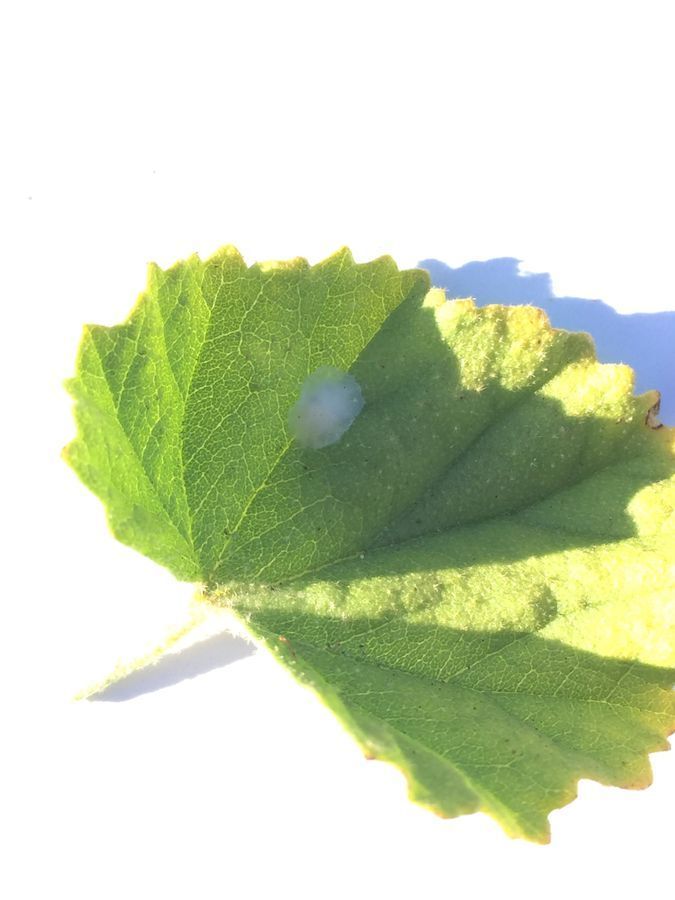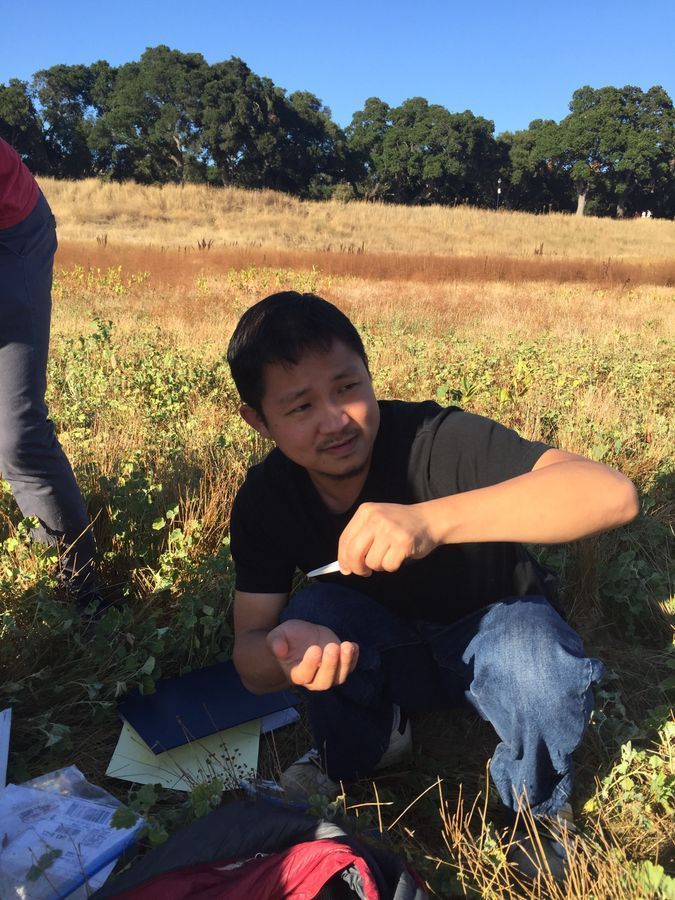20 million spiders; lake Lagunita
 Jul 26, 2015 • 11:44 AM UTC
Jul 26, 2015 • 11:44 AM UTC United States
United States 140x Magnification
140x Magnification Microorganisms
Microorganisms
Manu Prakash
I am a faculty at Stanford and run the Prakash Lab at Department of Bioengineering at Stanford University. Foldscope community is at the heart of our Frugal Science movement - and I can not tell you how proud I am of this community and grassroots movement. Find our work here: http://prakashlab.stanford.edu
266posts
1192comments
42locations

Lake Lagunita is a small water body right on Stanford campus – minus the water. I am sure you have all heard of the California drought; I have not seen water in the lake ever. Actually, just before yesterday; I had not even seen the lake although it is a 5 min walk from my lab. I love ecology and I find it surprising that it I had not accidently wandered on to it. But with the enterprising spirit of our lab interns – Alice, Antonio, Brian and the seasoned Mark and Tom; with a visitingschool teacher Chris Tolentino (Biology teacher at Richmond High School) we all found ourselveves at the bottom of a dry lake. And what a site..

The first thing we saw, the moment we walked on and realized we had not even a drop of water; is a peculiar spider web (could someone identify the spider based on this peculiar web). It’s clearly a trap since its shaped like a funnel and I did see a spider sitting waiting for its prey to arrive at the front door.

I was not able to catch the adult spider; so I started looking. The incredible diversity of things that call the Lagunita lake bottom home is mind boggling. Every step of the way; we would see a series of insects, abundant dry and pretty hardy plants.
Here is another object that caught my attention. It’s a plant leaf with a white splat like thing on it. It was always found on the top of the leaf; often only one per plant. At close examination; I could say that it was some kind of a silk like deposit. That’s about it..
A closeup picture;
Here is another object that caught my attention. It’s a plant leaf with a white splat like thing on it. It was always found on the top of the leaf; often only one per plant. At close examination; I could say that it was some kind of a silk like deposit. That’s about it..
A closeup picture;

We could have left the mystery at this point – but off course this is a foldscope team exclusion. Chris and Tom and already pulled out respective foldscope and several theories (early theories are called hypothesis) were starting to float. I also had a horse in the race and I was eager to actually find out what the hell was this white marking. To make matters concerning – we could find this object with an incredible repeatability – almost on every other plant. I am talking about a vast lake bottom filled with this plant. Can you imagine whatever this is – it’s quiet literally spread everywhere.
Tom Hata was quick to figure out how to mount the mystery object on a slide. I used two twigs to tease the casing apart just to see if it was concealing something inside. The slide went in a foldscope (140x) and we were ready to image.
Tom Hata was quick to figure out how to mount the mystery object on a slide. I used two twigs to tease the casing apart just to see if it was concealing something inside. The slide went in a foldscope (140x) and we were ready to image.

What we all saw caught us all by surprise. Tom first saw some tiny little legs – and then a rough shape of a spider; a tiny tiny spider. I was jumping with joy and had mounted my own slide to make sure I keep them alive. Suddenly we had hundreds of little spiders being watched under a foldscope. Here is a quick video of a live baby spider – looking good inside a foldscope.
I focused on live spiders; and was easily able to observe several pumps and individual cells in the spider hemolymph zipping from one part of the body to another. If you have never heard this before; spiders seem to have an incredible hydraulic mechanism they use to compensate movement. Now I don’t know why the hydraulics evolved at the first place (or how it beats muscle activity); but you can easily see a lot of “flow” going in and out of the legs. That’s exciting.
Next I focused on the abdomen; and could easily discern another pump. The beauty of development is that in its first stages; an organism has almost all the parts built but the cuticle had not darkened. So unlike an adult spider where it’s going to be hard for you to see innards; here we were watching internal processes unfold right inside the foldscope.
Insert video 2
Next I also focused on leg tips, a failed search for spinnerets and also a failed attempt to find an early stage embryo. We could also see the wrinkled shell structures from which the spiders walked out. I would have thought they could eat the shell (maybe they were going to – if I had not caused havoc in life of a few baby spiders). You can easily watch the eyes developing; quiet pigmented as well.
So here is what’s going on. Adult females are depositing eggs on the surface and encasing them with this beautiful sac like structure. What gets my mind bent is how many baby spiders are ready to hatch at a given time. This system is so incredibly fertile – that millions of sacs must exist at the bottom of lake Lagunita. Let’s assume that lake Lagunita is at least 1km by 1km. We found a spider sac on plants every 1/2 m. Let’s roughly assume 2 sacs per square meter (I bet it’s higher). 1sq km is 10^6 sq m. That means 2 million eggs sacs in lake Lagunita. Now every egg sac has at least 10 spiders; so we are talking about 20 million baby spiders crawling at any time. This does not even count the adults. Clearly this is a rough calculation – but an image of 20 million baby spiders crawling is quiet incredible.
I should not be too surprised. On most visits to tropics; I put a headlamp in the night and walk to any grassy area. And you can literally see thousands of shimmering star like lights on the ground (it’s the light reflecting back from the retina of the spiders – looking. Back at you – this way they have two chances of catching a photon – improving vision at night. I know – very clever).
It was starting to get dark; and I still had to pack for my morning flight. So I collected some more egg sacs and said goodbye to my new little spider friends. But – off course – I will be back.
Cheers
Manu
Next experiment: I would like to stage the development of these spiders. For that; I am going to collect a lot of egg sacs and go through to find freshly laid egg sacs. It’s still a mystery to what the actual adult looks like – but something tells me that a walk to Lagunita lake at night will solve that mystery soon. Until next time..
21.037454 -86.8686352
I focused on live spiders; and was easily able to observe several pumps and individual cells in the spider hemolymph zipping from one part of the body to another. If you have never heard this before; spiders seem to have an incredible hydraulic mechanism they use to compensate movement. Now I don’t know why the hydraulics evolved at the first place (or how it beats muscle activity); but you can easily see a lot of “flow” going in and out of the legs. That’s exciting.
Next I focused on the abdomen; and could easily discern another pump. The beauty of development is that in its first stages; an organism has almost all the parts built but the cuticle had not darkened. So unlike an adult spider where it’s going to be hard for you to see innards; here we were watching internal processes unfold right inside the foldscope.
Insert video 2
Next I also focused on leg tips, a failed search for spinnerets and also a failed attempt to find an early stage embryo. We could also see the wrinkled shell structures from which the spiders walked out. I would have thought they could eat the shell (maybe they were going to – if I had not caused havoc in life of a few baby spiders). You can easily watch the eyes developing; quiet pigmented as well.
So here is what’s going on. Adult females are depositing eggs on the surface and encasing them with this beautiful sac like structure. What gets my mind bent is how many baby spiders are ready to hatch at a given time. This system is so incredibly fertile – that millions of sacs must exist at the bottom of lake Lagunita. Let’s assume that lake Lagunita is at least 1km by 1km. We found a spider sac on plants every 1/2 m. Let’s roughly assume 2 sacs per square meter (I bet it’s higher). 1sq km is 10^6 sq m. That means 2 million eggs sacs in lake Lagunita. Now every egg sac has at least 10 spiders; so we are talking about 20 million baby spiders crawling at any time. This does not even count the adults. Clearly this is a rough calculation – but an image of 20 million baby spiders crawling is quiet incredible.
I should not be too surprised. On most visits to tropics; I put a headlamp in the night and walk to any grassy area. And you can literally see thousands of shimmering star like lights on the ground (it’s the light reflecting back from the retina of the spiders – looking. Back at you – this way they have two chances of catching a photon – improving vision at night. I know – very clever).
It was starting to get dark; and I still had to pack for my morning flight. So I collected some more egg sacs and said goodbye to my new little spider friends. But – off course – I will be back.
Cheers
Manu
Next experiment: I would like to stage the development of these spiders. For that; I am going to collect a lot of egg sacs and go through to find freshly laid egg sacs. It’s still a mystery to what the actual adult looks like – but something tells me that a walk to Lagunita lake at night will solve that mystery soon. Until next time..
21.037454 -86.8686352
Sign in to commentNobody has commented yet... Share your thoughts with the author and start the discussion!

 0 Applause
0 Applause 0 Comments
0 Comments
















